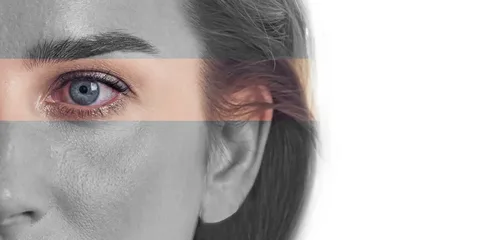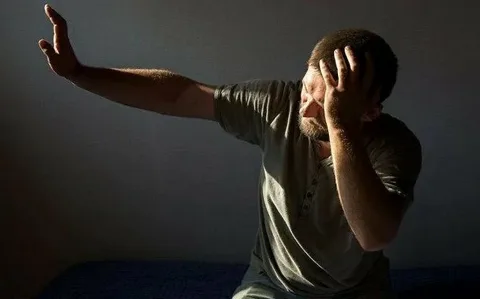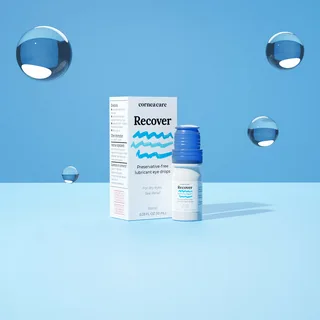Dry eye syndrome is a common condition that affects millions of people worldwide. While the primary symptoms often include a gritty sensation, irritation, and redness, many individuals also experience photophobia, or light sensitivity. This article explores the relationship between dry eye and photophobia, helping you understand the causes, symptoms, and potential treatments.
What is Dry Eye Syndrome?
Definition
Dry eye syndrome occurs when the eyes do not produce enough tears or when the tears evaporate too quickly. This can lead to discomfort, inflammation, and damage to the surface of the eye. The condition can be chronic or temporary, depending on various factors.
Causes of Dry Eye
Dry eye can arise from numerous factors, including:
- Environmental Factors: Wind, smoke, and dry climates can contribute to tear evaporation.
- Screen Time: Prolonged use of digital devices can reduce blinking, leading to dryness.
- Aging: Tear production decreases with age, making older adults more susceptible.
- Medical Conditions: Conditions like rheumatoid arthritis, diabetes, and thyroid disorders can affect tear production.
- Medications: Certain medications, such as antihistamines and antidepressants, can cause dryness.
Symptoms of Dry Eye
Common symptoms of dry eye include:
- Gritty or sandy sensation in the eyes
- Redness and irritation
- Blurry vision
- Excessive tearing in response to dryness
- Stinging or burning sensations

What is Photophobia?
Definition
Photophobia, or light sensitivity, is not a condition in itself but a symptom that can occur with various eye disorders. Individuals with photophobia may find bright lights uncomfortable or painful, leading them to squint or avoid light altogether.
Causes of Photophobia
Photophobia can stem from several sources, including:
- Eye Conditions: Migraines, uveitis, and corneal abrasions can lead to light sensitivity.
- Neurological Disorders: Conditions like meningitis or concussions may also cause photophobia.
- Medications: Some medications can increase sensitivity to light as a side effect.
Symptoms of Photophobia
Symptoms associated with photophobia include:
- Discomfort in bright light
- Squinting or closing the eyes in bright conditions
- Headaches triggered by exposure to light
- Difficulty adjusting to changes in light levels

How Dry Eye and Photophobia Are Connected
The Mechanism Behind the Connection
The link between dry eye and photophobia lies in the way the eyes function. When the eyes are dry, the corneal surface can become damaged, leading to inflammation and increased sensitivity. This irritation may cause the eyes to react strongly to light, resulting in photophobia.
The Role of Inflammation
Dry eye can cause inflammation in the eye’s surface tissues, which may heighten sensitivity to light. When the cornea is irritated, it can signal the brain to perceive light as more intense or painful than it is.
Recognizing the Symptoms
Symptoms Overlap
Many individuals with dry eye may not initially recognize that their light sensitivity is linked to their eye condition. The symptoms can be easily confused with other issues, making it important to be aware of the overlap between dry eye symptoms and photophobia.
When to Seek Help
If you experience persistent dry eye symptoms along with light sensitivity, it’s essential to consult an eye care professional. They can provide a comprehensive evaluation and determine the best course of action.
Diagnosis of Dry Eye and Photophobia
Comprehensive Eye Exam
A thorough eye examination is crucial for diagnosing both dry eye and photophobia. The exam may include:
- Visual Acuity Test: Assessing how well you see at various distances.
- Tear Break-Up Time Test: Measuring how long it takes for tears to evaporate.
- Schirmer’s Test: Evaluating tear production.
Identifying Underlying Conditions
Your eye doctor may also investigate any underlying conditions contributing to your symptoms. This may involve discussing your medical history and current medications.
Treatment Options for Dry Eye and Photophobia
Lifestyle Modifications
Making some lifestyle changes can significantly improve both dry eye and photophobia symptoms:
- Stay Hydrated: Drinking plenty of water can help maintain overall hydration.
- Limit Screen Time: Take regular breaks from screens to reduce eye strain.
- Use Humidifiers: Adding moisture to the air can prevent tear evaporation.
Artificial Tears and Lubricating Eye Drops
Over-the-counter artificial tears can provide temporary relief for dry eye symptoms. These drops help keep the eyes moist and can alleviate some discomfort associated with photophobia.
Prescription Treatments
If over-the-counter solutions don’t provide adequate relief, your eye doctor may prescribe:
- Anti-inflammatory Drops: These can help reduce inflammation and improve tear production.
- Punctal Plugs: Tiny devices inserted into the tear ducts to retain tears on the eye’s surface.
Light Sensitivity Treatments
To address photophobia specifically, consider:
- Photochromatic Lenses: These glasses adjust to light conditions, providing comfort in bright environments.
- Sunglasses: Wearing sunglasses outdoors can help reduce light sensitivity and protect the eyes from UV rays.
Home Remedies for Dry Eye and Photophobia
Warm Compresses
Applying a warm compress to the eyes can help stimulate oil production in the tear glands, improving tear quality and reducing dryness.
Omega-3 Fatty Acids
Incorporating omega-3 fatty acids into your diet—found in fish, flaxseeds, and walnuts—can promote better eye health and may help alleviate dry eye symptoms.
Blink Exercises
Practicing regular blinking exercises can help ensure your eyes stay moist. Try to consciously blink more often, especially during extended screen use.
Prevention Tips
Regular Eye Exams
Routine eye check-ups can help detect dry eye and other conditions early, allowing for timely intervention.
Protect Your Eyes
When outdoors, wear sunglasses to shield your eyes from harsh sunlight and wind. Indoors, consider using a humidifier, especially in dry climates or during winter.
Manage Screen Time
Implement the 20-20-20 rule: every 20 minutes, take a 20-second break and look at something 20 feet away. This practice helps reduce eye strain and encourages blinking.

Conclusion
Understanding the connection between dry eye syndrome and photophobia is crucial for anyone experiencing these symptoms. By recognizing the signs, seeking proper diagnosis, and exploring treatment options, you can improve your quality of life and reduce discomfort. If you’re struggling with dry eyes or light sensitivity, don’t hesitate to consult an eye care professional for personalized advice and treatment plans. Remember, your eyes deserve the best care!
